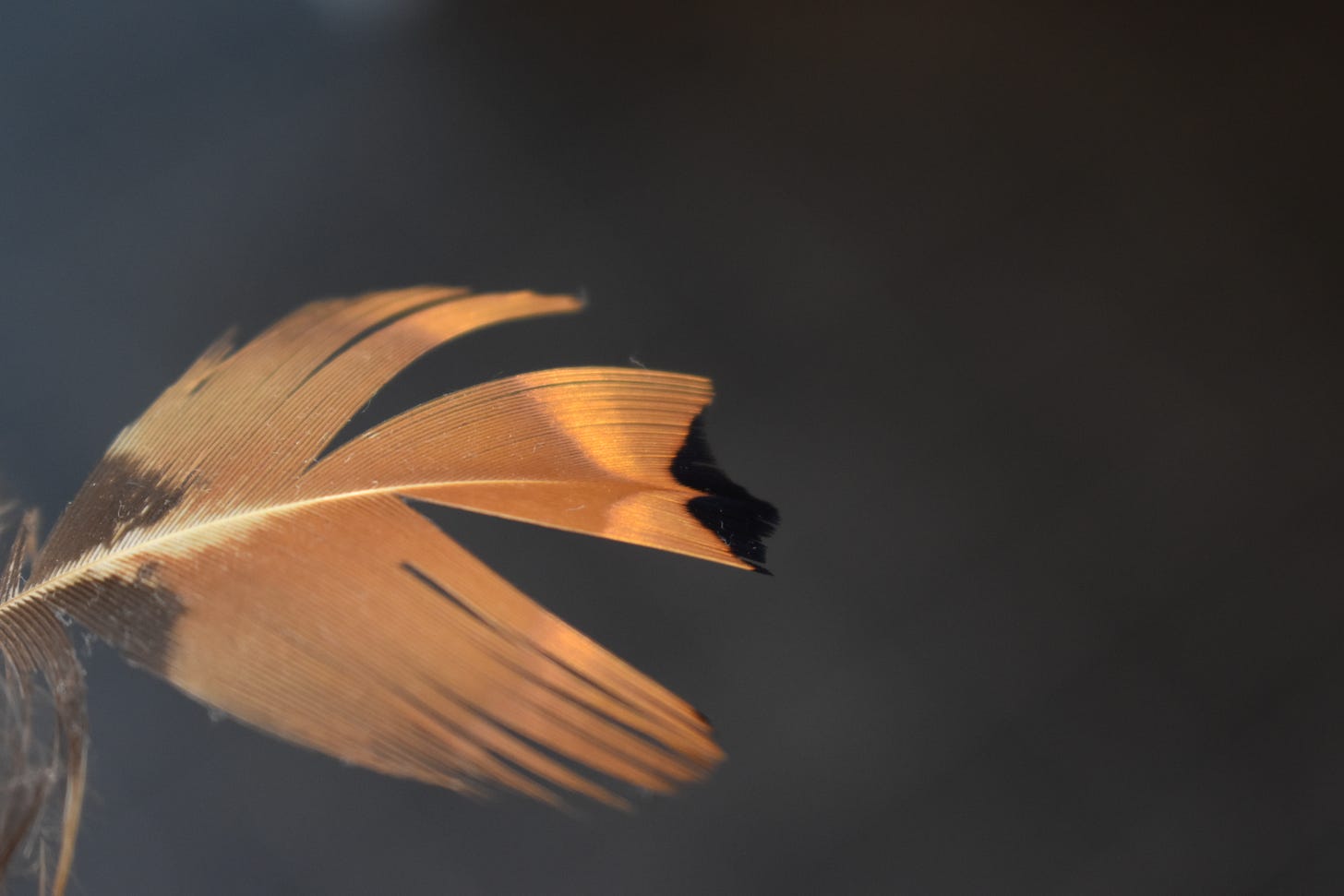If you sat in the front passenger seat of my car, you might uncover a secret. Perhaps it would be at sunset, as the sun passes low and strong over the road in front, or perhaps you would be struck by the desire to look at yourself in the little mirror that lives inside the sun visor. But however it happened, if you flipped that visor down, you would discover a fistful of feathers tucked into the thin vinyl pocket. I put them there years ago. Perhaps six or seven years ago. I’m not sure why particularly, they’re just pheasant tail feathers, but, in that moment, their sleek tabby stripes appealed to me.
Generally, I find it hard to resist a feather. Have you ever considered how amazing they are? The central hollow shaft with its nail-thickness-skin, the individual fronds fringing it on both sides, so soft they are, individually, almost intangible. By the time we come to pick a feather up from the earth it is, essentially, dead but, whilst they are on the bird, they are a living skin. Each with a bespoke shape for where it appears on the bird’s body, they regulate temperature, repel water, create the illusion of size when the bird feels threatened, aid mating ceremonies, protect eggs and line nests. And, as if that wasn’t enough, they also enable the bird to fly. What a magical micro-structure. How could you walk past a lost feather without wanting to pick it up and take a closer look?
Besides, it’s nice to have them: soft fragments of another life I can never really understand. A piece of that bird’s existence falling loose as it flies by, or preened itself or, perhaps, evidence of a narrow escape, the snatching jaws or claws of a predator closing a split-second too late and catching only one or two delicate tufts. For years I just enjoyed finding them, seeing new patterns or colours, and wondering at the mystery of who they belonged to before they fell without the need to know. Since the collection of my car-feathers though, I have been deliberately more restrained and discerning with my avian souvenirs. Now, I try to only pick one up if it looks unusual or distinctive.
And, recently, I’ve felt the desire to know more. I’m no longer happy not knowing who left me this feathery gift, wondering who wore these stripes, or how that patch of burnished chestnut looked amongst the rest of the plumage.
Sometimes, the finding gives you clues. The short, round, cave-black feather I found on a Faroe Island clifftop was pretty much guaranteed to have belonged to a puffin. The thin, black plume I fished out of the waves on the north Norfolk coast was most likely to have been from a cormorant or a scoter. There was a raft of scoters loitering like scowling Bond-villains not far out to sea, and cormorants flew over on a regular basis. But, when the context of the finding doesn’t narrow it down for you, how do you go about finding the answer?
After a bit of hunting around, I’ve found an amazing resource and wanted to share it with you!
Keep reading with a 7-day free trial
Subscribe to The Field Diary to keep reading this post and get 7 days of free access to the full post archives.




